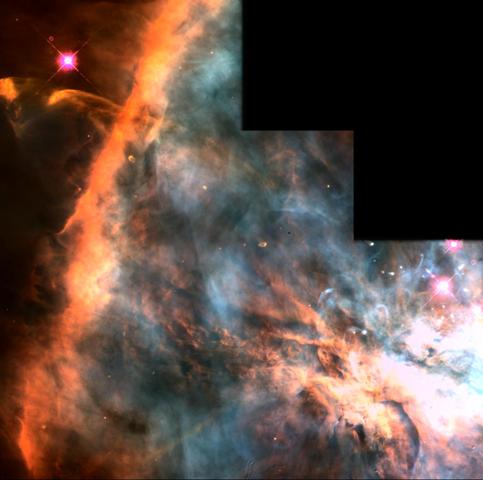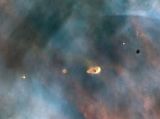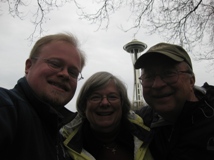Space Saturday XXVII
I am back once again with the next edition of Space Saturday! Today I bring you a classic: M42 - The Orion Nebula!

Credit: C.R. O’Dell/Rice University; NASA (Source)
There are a wide variety of images of the Orion Nebula out there, all of which have their own beauty. I picked this one from Hubble for is close detail and beautiful coloring (although this one is right up there). This nebula, located just south of the belt of Orion, is one of the few nebulae that is visible to the naked eye.
 Aside from being visually attractive, this nebula is relative close to the Earth and is a great place to study star and planetary system formation. The image at right (source) is a close up of a proplyd (or protoplanetary disc). They are regions where gasses have condensed and are starting to accrete around a young star which will eventually turn into a planetary system.
Aside from being visually attractive, this nebula is relative close to the Earth and is a great place to study star and planetary system formation. The image at right (source) is a close up of a proplyd (or protoplanetary disc). They are regions where gasses have condensed and are starting to accrete around a young star which will eventually turn into a planetary system.
A Hubble Space Telescope view of a small portion of the Orion Nebula reveals five young stars. Four of the stars are surrounded by gas and dust trapped as the stars formed, but were left in orbit about the star. These are possibly protoplanetary disks, or “proplyds,” that might evolve on to agglomerate planets. The proplyds which are closest to the hottest stars of the parent star cluster are seen as bright objects, while the object farthest from the hottest stars is seen as a dark object. The field of view is only 0.14 light-years across.
Astronomy is so freakin’ cool! (Don’t worry, I am fully aware that I am a geek and am quite okay with it.)
For more images, see my Space Saturday Archive.




Recent Comments